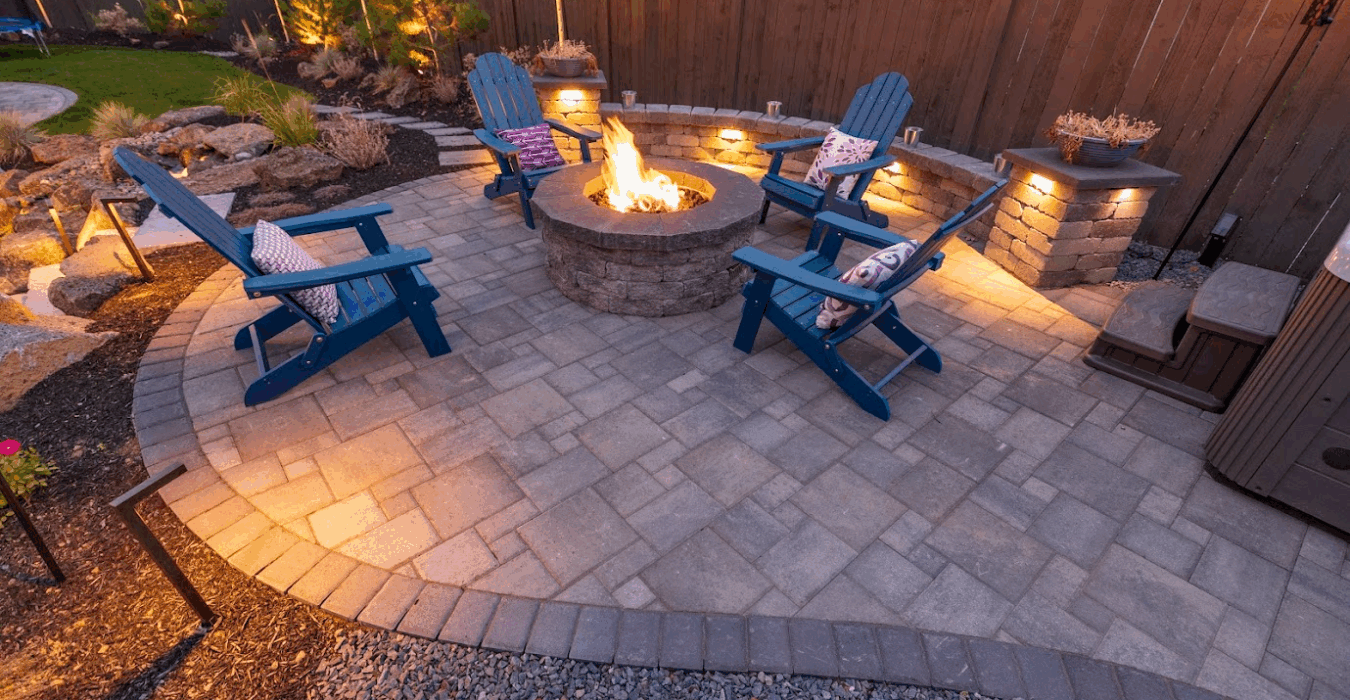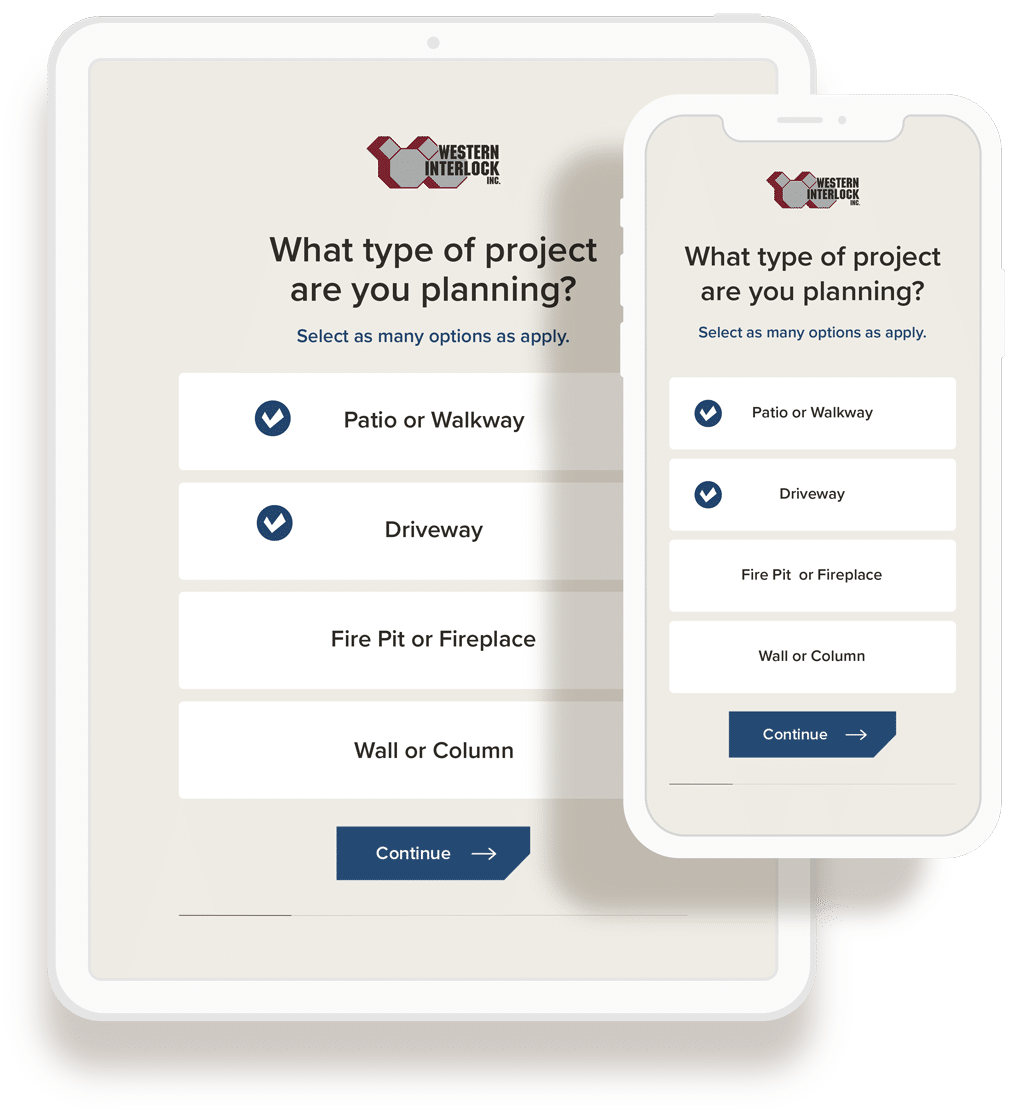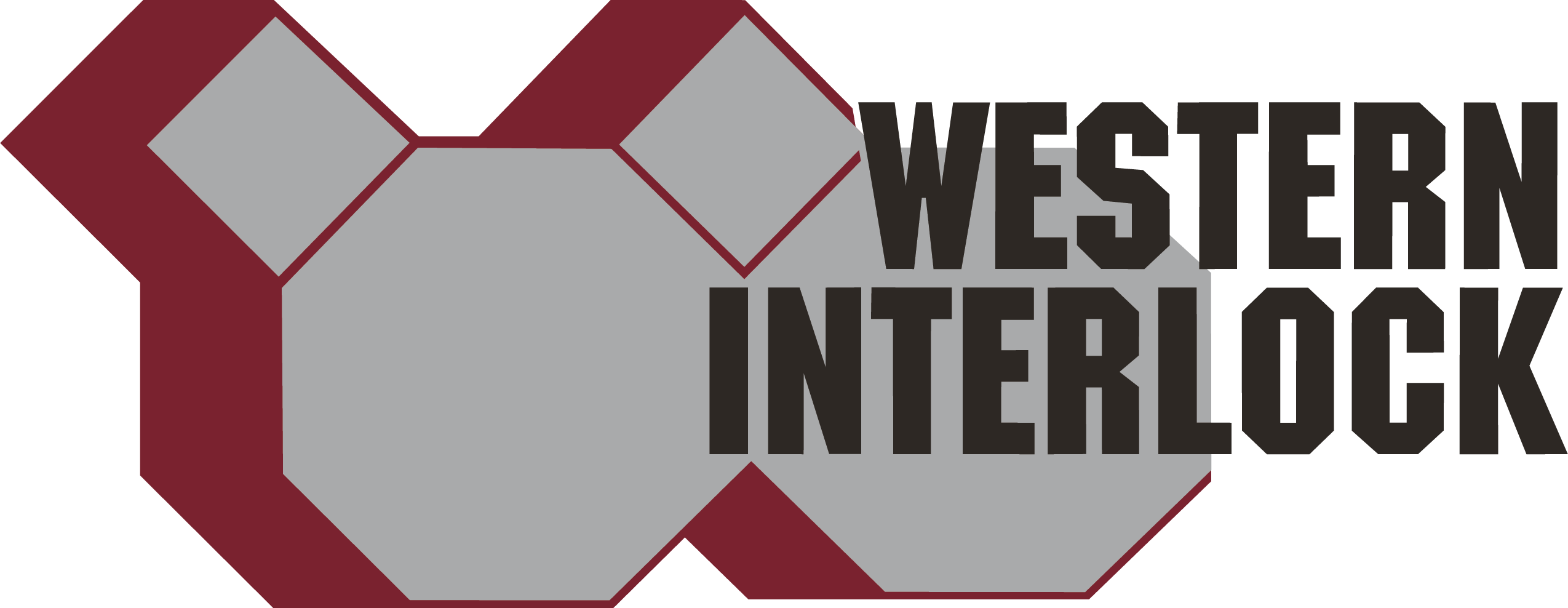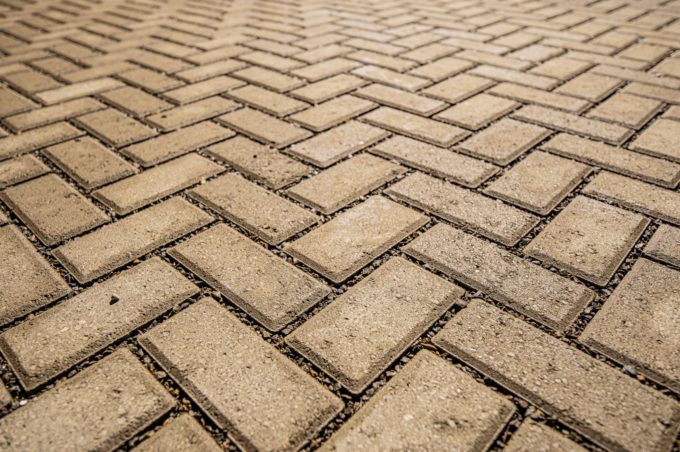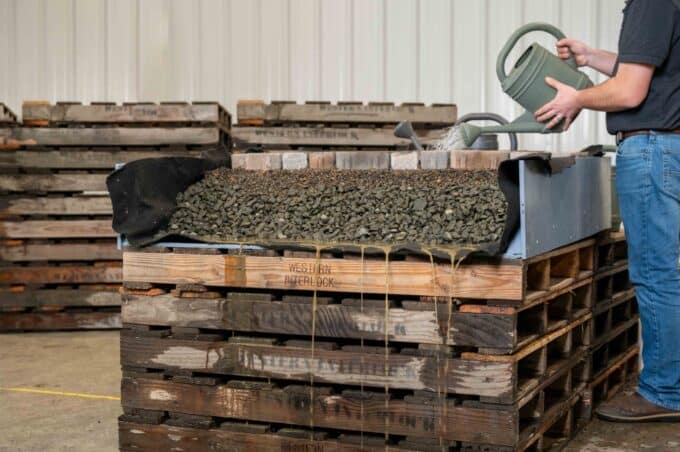Get our FREE Project Planning Guide
"*" indicates required fields
You’ve been dreaming of cozy evenings gathered around a crackling fire pit, but here’s the question that stumps most homeowners and DIYers: “How deep should my fire pit be?” It’s a simple question with a surprisingly complex answer that affects everything from how well your fire burns to how safe it is for your family.
The majority of fire pit problems—poor heat distribution, excessive smoke, safety concerns—actually stem from incorrect depth, not the fuel you’re using or even the overall design. Getting the depth right isn’t just about following some arbitrary measurement. It’s about understanding how this one dimension affects the performance of your fire-pit. Whether you’re considering a DIY build or exploring our fire pit kits, understanding optimal depth principles will help you make informed decisions that ensure years of reliable performance.
Important: Safety and Legal Compliance First
Before we explore the technical aspects of fire pit depth, there’s a critical point that supersedes all other considerations: Fire pit regulations vary significantly by municipality, county, and state. Always check with your local fire department and building officials for specific depth, size, and clearance requirements in your area. Some jurisdictions may prohibit open fires entirely, while others have specific requirements that supersede general recommendations.
Common restrictions often include minimum clearances from structures, maximum fire pit sizes, required permits, and yes—specific depth limitations. Some areas require professional engineering for fire features over certain dimensions, while others have seasonal burn restrictions that could affect your project planning.
The guidance we’re sharing represents general fire performance principles and industry best practices, but your local codes take precedence in every situation. Think of this information as educational groundwork that helps you ask the right questions when you contact your local authorities. Professional consultation becomes especially important for complex installations, permanent structures, or any situation where you’re unsure about compliance requirements.
What Does “Optimal Performance” Mean for Fire Pits?
When fire safety experts talk about optimal fire pit performance, they’re evaluating four key metrics that directly impact your experience and safety.
Efficient combustion means your fire burns fuel completely with minimal smoke production. You’ll know you’ve achieved this when you can maintain steady flames without constant adjustment, and your neighbors aren’t complaining about smoke drifting into their yards. Proper depth plays a crucial role here because it affects how air circulates through your fuel bed.
Heat distribution refers to consistent radiant warmth that reaches your seating area effectively. The best fire pits create a comfortable warmth zone that extends 6-10 feet from the fire, allowing people to gather around without some seats being too hot while others are too cold. Depth affects this by influencing flame height and heat projection patterns.
Safety containment ensures your fuel bed remains secure and prevents ember spread, even during breezy conditions. This is where depth becomes a critical safety factor—too shallow, and burning materials can easily escape; too deep, and you might create airflow problems that cause unpredictable flame behavior.
Finally, user experience encompasses everything from easy lighting and fuel management to comfortable flame viewing and straightforward maintenance. Nobody wants a fire pit that’s difficult to start, impossible to clean, or requires constant attention to keep burning properly.
Here’s how depth affects each of these performance factors: When your fire pit is too shallow, you’ll typically see excessive flame heights that project heat inefficiently and create safety risks from flying embers. Too deep, and you’ll struggle with poor airflow that leads to smoky, hard-to-light fires that burn inconsistently. The sweet spot balances adequate fuel containment with proper air circulation.
The Science Behind Optimal Depth
Think of fire like a living thing that needs three essentials: fuel, heat, and oxygen. Depth directly affects how oxygen reaches your fuel bed. When a fire pit is too shallow, air moves across the fuel too quickly, creating those towering flames that look dramatic but actually waste heat by sending it straight up into the sky. Too deep, and air circulation gets restricted, leading to incomplete burning and that annoying smoke that chases you around the fire pit.
The right depth creates the “sweet spot” where air can flow properly through your fuel while maintaining clean, efficient burning. Your fire pit walls also act like a heat battery, absorbing heat during peak burning and radiating it back to keep things consistent.
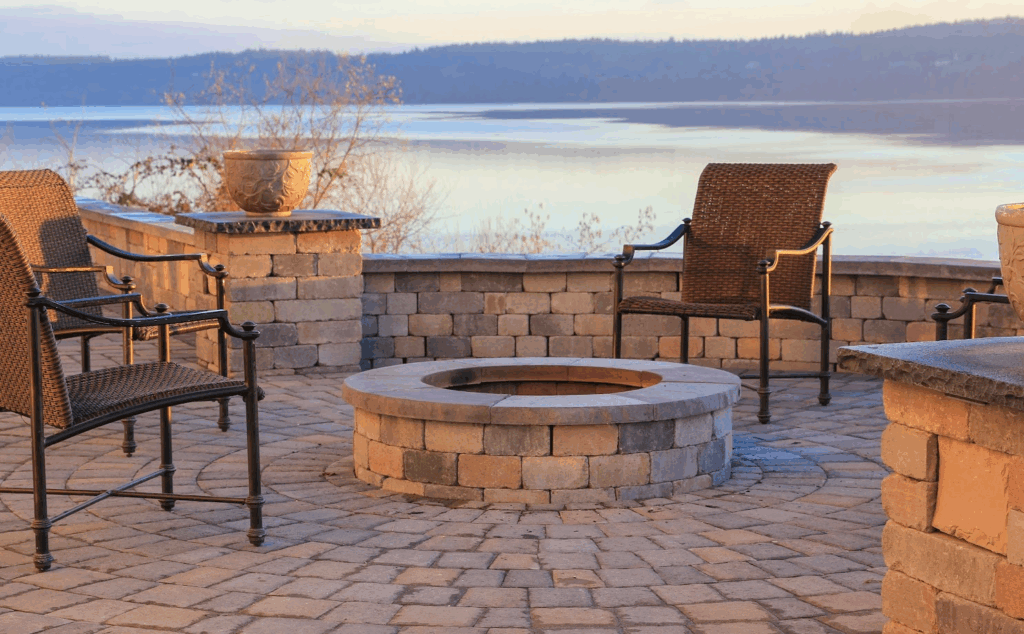
Comprehensive Fire Pit Depth Guidelines
The optimal depth for your fire pit depends primarily on its diameter. That said, usage patterns and environmental factors also play important roles in determining the best specifications for your situation.
For small fire pits with 30-40 inch diameters, the recommended depth typically ranges from 6-8 inches. These compact fire features work best with smaller logs and kindling-focused fires, creating intimate heat that’s perfect for small gatherings or as an accent feature in cozy outdoor spaces. The shallower depth makes fuel management easier and provides the efficient combustion needed for smaller fuel loads. You’ll find these dimensions work particularly well for our Tegula Garden Wall fire pit kit, which is designed specifically for smaller spaces.
Medium fire pits ranging from 40-50 inches in diameter perform optimally with depths between 8-12 inches. This size represents the sweet spot for most family applications. It provides balanced heat distribution and fuel capacity that can sustain longer burns without becoming overwhelming to manage. These dimensions accommodate standard firewood and deliver the consistent performance that makes fire pits the centerpiece of family gatherings and regular entertainment. Our Chateau series fire pits exemplify this category with their 50-inch diameter design optimized for reliable performance.
Large fire pits exceeding 50 inches in diameter typically require depths of 10-14 inches to perform properly. These substantial fire features can handle large logs and provide extended burn times. This makes them ideal for big gatherings or commercial applications. The additional depth becomes necessary to manage the larger fuel loads safely while maintaining proper airflow for clean combustion. The increased thermal mass also helps with heat retention, though it means longer startup times and more complex maintenance.
Beyond size considerations, your usage patterns should influence depth selection. If you’re planning occasional use for special occasions, slightly shallower depths within the recommended ranges can make lighting and management easier. For regular entertainment or extended evening sessions, optimal depths toward the higher end of the ranges will provide more consistent performance and longer burn times.
Environmental factors also play a role in depth optimization. In windy areas, additional depth provides better ember containment and more stable combustion. Sheltered locations can typically use standard depths without modification. The type of fuel you plan to use matters too. Hardwoods generally benefit from deeper beds that allow for sustained burns, while softwoods work well with more moderate depths for quicker, brighter fires.
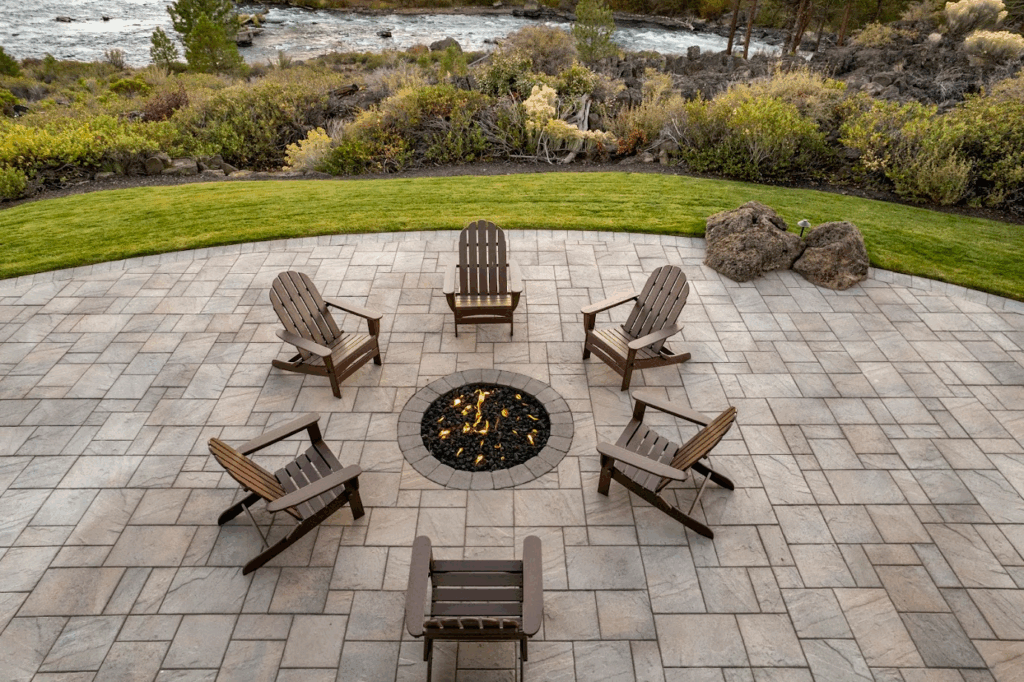
Common Depth Mistakes and Their Consequences
Learning from others’ mistakes can save you significant frustration and potential safety issues. Here are the most common depth-related problems we see in fire pit projects.
Too shallow fire pits create performance and safety issues. You’ll notice excessive flame heights that send heat straight up instead of radiating outward to your seating area. This leads to uneven heating where people closer to the fire get too hot while those farther away remain cold. Burning logs can easily roll out, embers escape more readily, and you’ll find yourself constantly repositioning fuel.
Too deep fire pits create the opposite problems. Poor airflow leads to smoky fires that are difficult to light and maintain. Cleaning becomes difficult because ash accumulates in hard-to-reach places. You’ll also need excessive fuel to achieve the same heat output because flames burn too low to project heat effectively.
Installation and Construction Considerations
When planning your fire pit depth, distinguish between fire bowl depth (the actual burning area) and total excavation requirements. Your total excavation will typically be deeper to accommodate a gravel foundation for drainage and stability. This typically adds 4-6 inches to your digging requirements. For DIY projects, staying within the 6-12 inch depth range we’ve discussed helps ensure safety and performance without requiring professional engineering.
Our fire pit systems are engineered with optimal depths built into their designs, simplifying planning and ensuring performance.
Western Interlock Fire Pit Solutions
Western Interlock’s fire pit systems are specifically engineered to optimize depth for performance while simplifying installation for homeowners.
The Tegula Garden Wall fire pit kit features a 40-inch outside diameter with depth specifications optimized for its size category. This compact design provides excellent performance for smaller gathering spaces. It also maintains the easy management characteristics that make it ideal for occasional use or intimate settings.
For standard applications, our Chateau series fire pits, all feature 50-inch diameter designs with depth specifications engineered for optimal performance. These medium-sized fire pits represent the ideal balance of fuel capacity, heat distribution, and manageable maintenance that works for most family applications.
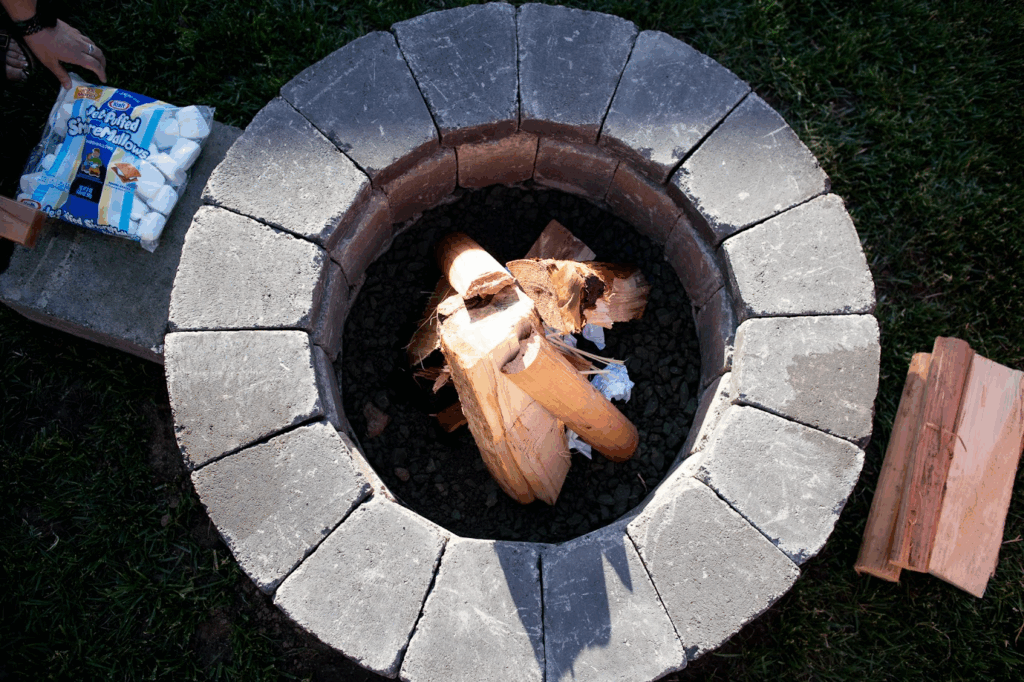
Maintenance and Long-Term Performance
Proper depth selection makes long-term maintenance easier. When optimized, ash removal becomes straightforward and performance stays consistent. Plan to clean your fire pit thoroughly at least once per season. Also, be sure to monitor ash buildup so that your effective depth doesn’t reduce over time.
Signs of optimal depth performance include easy lighting, minimal smoke production, consistent heat distribution, and manageable ash accumulation. If you notice difficulty lighting, excessive smoke, or uneven heating, depth-related issues might be the cause.
Building Your Perfect Fire Pit
Proper depth serves as the foundation for fire pit performance and safety. To determine the optimal depth for your project, start with our size-based recommendations. Then, consider your usage patterns, environmental factors, and local code requirements.
You now have the knowledge to make informed depth decisions and evaluate fire pit options with confidence. Whether you’re planning a DIY build or considering pre-engineered solutions, understanding how depth affects performance puts you in control of the outcome.
Most importantly, always verify local requirements before construction begins. What we’ve covered represents fire safety best practices, but compliance with local codes ensures your project is both safe and legal.
Ready to plan your perfectly sized fire pit? Download our free Project Planning Guide to help you get started on your fire pit project!
Get our FREE Project Planning Guide
Tell us where to send it and we’ll email the backyard planning guide to you right away!
"*" indicates required fields


